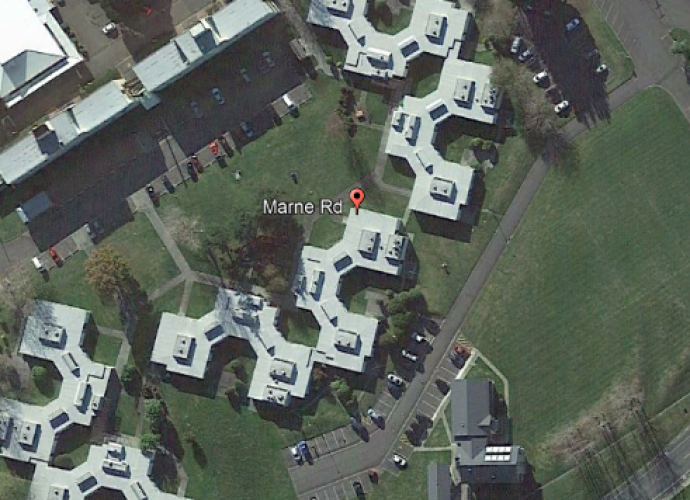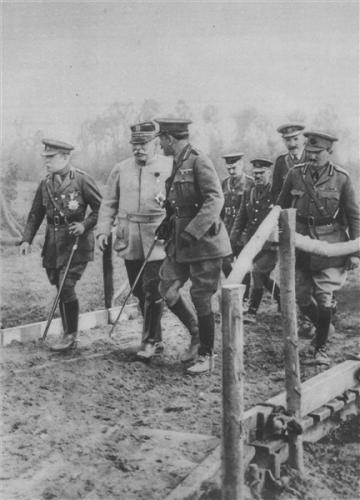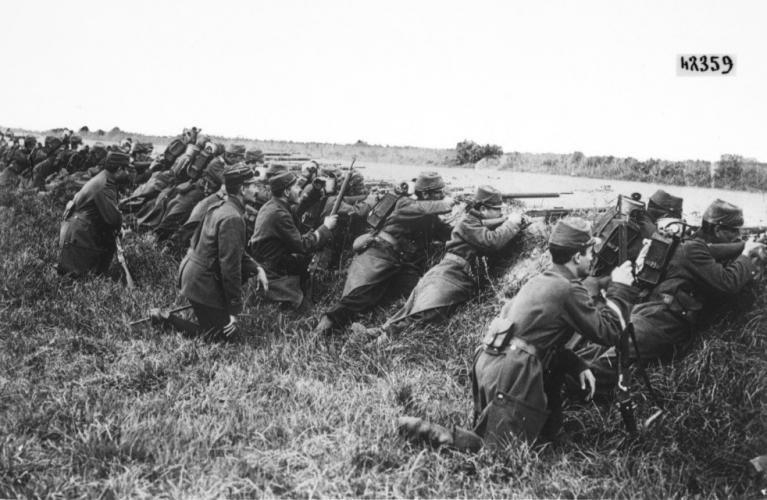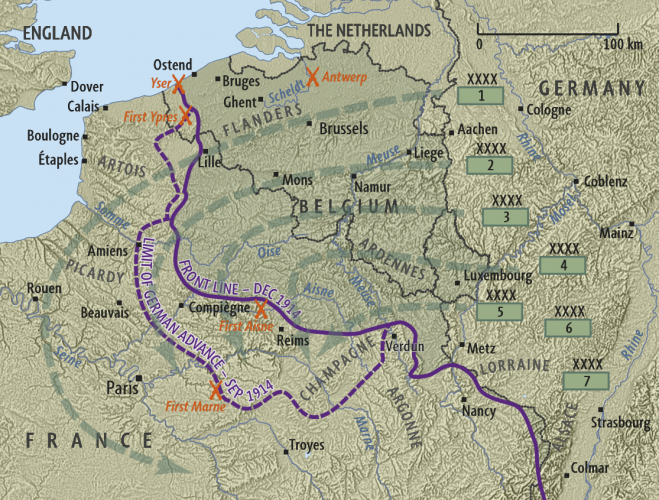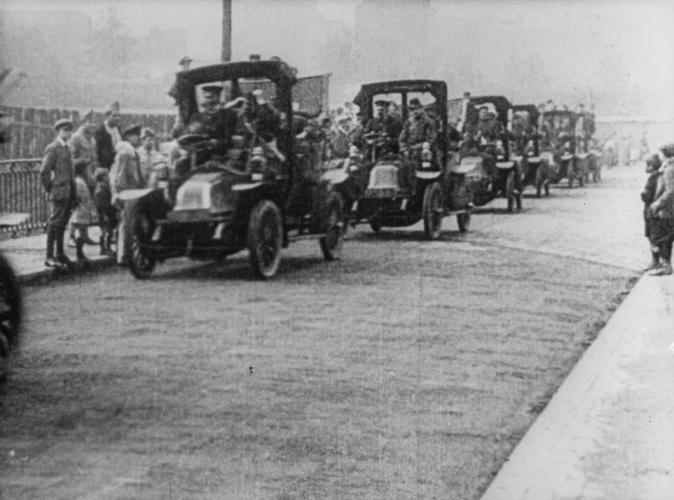203 Marne Road Trentham Upper Hutt, aerial view 2018. Marne Road is within the boundary of Trentham Camp.
Reason for the name
Marne Road Trentham was named after the World War One battle of Marne in France. Over the years Trentham Military camp named and renamed many of the streets in and around the camp compound in honour of our overseas military service.
The First Battle of the Marne in WW1 was conducted from 6-12 September 1914, with the outcome bringing to an end the war of movement that had dominated the battlefield since the beginning of August.
Author: The Poppy Places Trust
The First Battle of the Marne was conducted from 6-12 September 1914, with the outcome bringing to an end the war of movement that had dominated the battlefield since the beginning of August. This marked the end of the German advance into France and was a prelude to the trench warfare which would ensure for the next 4 years.
The German advance into France was in pursuance of the aims of the Schlieffen Plan, whose primary focus was the swift defeat of France in the west before wheeling the Germany Army to the east to face the slower mobilising Russian Army. Their progress had been rapid, having successfully beaten back Belgian, French and British forces over the battlefields of Belgium and north-eastern France. By early-September 1914 the German Army was within sight of Paris.
As the German Army neared, the defending French Fifth and Sixth Armies, as well as the British Expeditionary Force (BEF), were at the point of exhaustion, having retreated continuously for 2 weeks under repeated German attack. As he neared the Marne River east of Paris, Alexander von Kluck's First Army was instructed to encircle Paris. The French government, similarly expecting a siege and possible fall of the capital, left Paris for Bordeaux.
Marshal Joffre planned to retreat behind the Seine before counterattacking. He envisaged a battle, probably to take place around 8 September, "between the horns of Paris and Verdun." On the 6th September, Joffre authorised General Maunoury's Sixth Army, comprising 150,000 men, to attack the right flank of the German First Army. In turning to meet the French attack a 30 mile wide gap appeared in the German lines between the First and Second Army, a breach which the British and French forces were quick to exploit. While the Germans continued to attack from the 6th to the 8th of September, the allied line was saved by the now famous arrival of 6,000 French reserve infantry troops ferried from Paris in streams of taxi cabs.
On the 8th September the French Fifth Army launched a surprise attack against the German Second Army, serving to further widen the gap between the German First and Second Armies. By the 9th the German armies began a retreat ordered by the German Chief of Staff, Helmuth von Moltke. The German forces were by this time overstretched and plagued by poor communication, exacerbating von Moltke’s fears of an allied breakthrough of his lines.
The retreating German armies were hounded relentlessly by the French and British forces. The German armies ceased their withdrawal after 40 miles at a point north of the River Aisne, where the retreating German armies dug in, preparing trenches and front lines that were to define the landscape for several years.
A clear strategic triumph for the allied forces, German offensive had been repulsed, recapturing large amounts of lost ground in the process. More importantly, the battle ended any hopes the Germans had of bringing the war on the Western Front to an early close before facing the Russian Army. Instead of the planned single front war, Germany now had to split its forces and material between two fronts, a turn of fate which would inevitably prove fatal.
Casualties at the battle were heavy. The French incurred 250,000 losses, with the Germans suffering a similar amount of casualties. The British Expeditionary Force recorded 12,733 casualties.
“Incidentally, there was Second Battle of the Marne, fought over the period 15 July – 6 August 1918. This battle was the German Army’s final major offensive on the Western Front, and the Allied victory in the battle was immediately followed by the Hundred Days Offensive which ended the First World War.”


